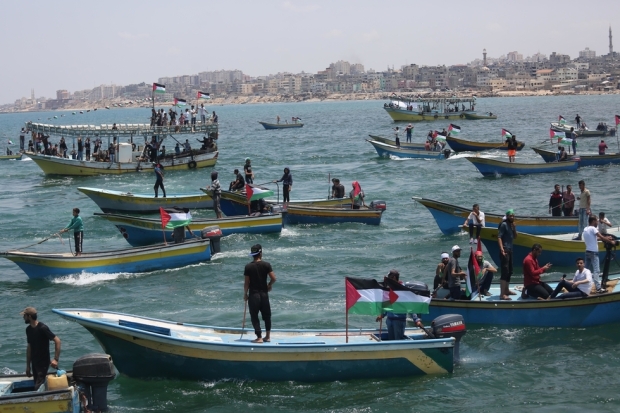Gaza violence calms after overnight air strikes

Gaza's streets were filled with morning shoppers and children went to class, and schools opened as usual in Israeli towns near the border a day after the worst flare-up in violence since the 2014 Gaza war.
Late on Tuesday, Islamic Jihad and Hamas said they had agreed to a ceasefire, and vowed to stop firing mortars and rockets if Israel also halted its bombardment of the Gaza Strip.
Early on Wednesday, Israel reportedly hit 25 Hamas targets on the Gaza Strip. Israeli ministers have made contradictory statements about the ceasefire, and the cabinet is scheduled to meet on Wednesday night to discuss the situation.
READ MORE►
'Gaza is fed up': Palestinians to send out boats defying siege
But there have been no reports of further fighting as both sides appeared to back away from a slide towards a new war after weeks of violence along the border.
On Tuesday, Israel struck more than 60 military targets in the coastal enclave, with some 70 rockets and mortars fired from the territory throughout the day.
Hundreds of Palestinians have been injured by Israeli fire during weeks of protests in Gaza (Reuters)
The violence followed weeks of deadly unrest along the border between Israel and the blockaded Palestinian enclave.
In a rare joint statement late on Tuesday, Hamas and Islamic Jihad declared shared responsibility for the rocket and mortar fire, saying it was in retaliation for Israeli attacks targeting their positions.
Hamas' deputy chief inGaza, Khalil al-Hayya, said Egyptian mediation led to the ceasefire, but the terms of the "understanding" did not go beyond "a restoration of calm by both sides".
"After the resistance succeeded in confronting the (Israeli) aggression … there was a lot of mediation in the past hours," al-Hayya said late on Tuesday.
"An agreement was reached to return to the (2014) ceasefire understandings in the Gaza Strip. The resistance factions will abide by it as long as the Occupation does the same," he said in a statement, using militant groups' term for Israel.
Weeks of protests
Tuesday's incidents took place as a flotilla set sail from the Gaza Strip and attempted to break the siege on the area.
Passengers from one of the leading flotilla boats were arrested and escorted to the Israeli port of Ashdod.

Dozens of smaller boats accompanied the two leading ships attempting to break the siege (MEE/Mohammed Asad)
This latest episode also followed weeks of deadly demonstrations and clashes along the Gaza-Israel border, beginning on 30 March.
Protesters have demanded that Palestinians who were expelled in the 1948 war amid Israel's creation be allowed to return to their former homes, now inside Israel.
They peaked on 14 May, when at least 61 Palestinians were killed in clashes as tens of thousands of Gazans protested the US transfer of its embassy in Israel from Tel Aviv to Jerusalem the same day.
Low-level demonstrations and clashes have continued ever since.
At least 121 Palestinians have been killed by Israeli fire. No Israelis have been killed.
Israel says its actions are necessary to defend its borders, accusing Hamas of encouraging thousands of Palestinians to break through the border and attack Israelis.
But Israel has faced international criticism and calls for an independent investigation over its use of live fire during the protests and border clashes.
The Gaza Strip has been under Israeli blockade for over a decade, which Israel says is necessary to prevent Hamas from obtaining means to attack.
[contf]
[contfnew]

middle east eye
[contfnewc]
[contfnewc]





